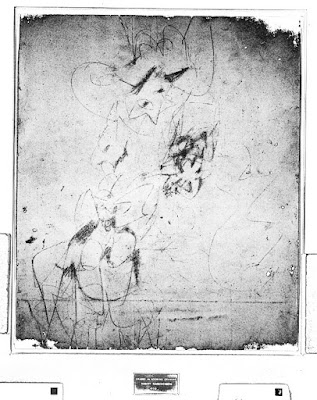As both artist and subject DeAnsar searches for the optical phenomena of reality. Inspired by Alberto Giacometti's portrait of James Lord, DeAnsar affirms,"The form is always in proportion to the obsession." And then, there are (nothing more and nothing less than) ants.
Sunday, December 9, 2018
Discovery
As both artist and subject DeAnsar searches for the optical phenomena of reality. Inspired by Alberto Giacometti's portrait of James Lord, DeAnsar affirms,"The form is always in proportion to the obsession." And then, there are (nothing more and nothing less than) ants.
Tuesday, September 25, 2018
Rembrandt to Marc and Back Again
You can begin with a drawing (one of your own or maybe if you have a Rembrandt around) slowly erasing the image until you have found your resting place.
When I named-dropped Rembrandt in History of Drawing Lesson Plan: Lesson Eleven I was using him as the prime example, the definition of a masterpiece, his artwork so valuable that it would be unthinkable to erase. Certain with the possibility that you have a Rembrandt at home!!!
The next day while delivering several of our beach plastic artworks to Cubberley Artist Studio Program in Palo Alto to be included in Eco Echo: Art and Environmental Lab, I spied an array of frames set out, free for the taking. Always on the lookout for anything that has potential reuse I took a closer look. Low and behold — there in the free-pile was my Rembrandt — his iconic self-portrait. Yes, indeed!!! I tucked it under my arm and away it went.
Praise be to serendipity.
Back in my studio, on the search to discover a new constellation (Mickey Mouse), a new meaning (Marc's moustache), I set about to erase with an electric eraser.
Wednesday, August 29, 2018
Luminous Nose
THIS IS NOT A NOSE.
THIS IS NOT A NOSE.
Monday, May 14, 2018
obession 2018
Erased




























